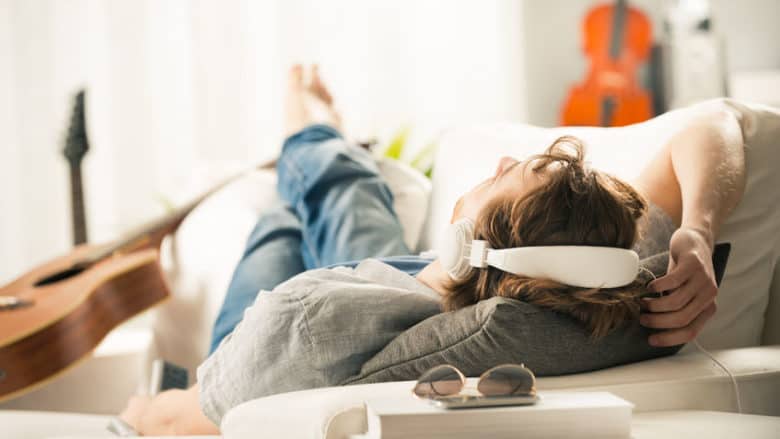
Tune in and relax with progressive muscle relaxation. In our hurry, hurry, world with more and more expectations placed on ourselves by ourselves and/or others we lose touch with our minds and our bodies.
Our mind becomes distracted, our muscles tense. Tight and tense muscles begin to feel like our normal state. We become numb. Perhaps, not even realizing our tension, our stress until we become ill or the muscles so tight and painful we cannot go on.
Progressive muscle relaxation reconnects you with your body. It brings your mental focus away from the tyranny of pressured time and expectations to sensing and relaxing you muscles—your body.
Let’s begin. Here are 4 steps to progressive relaxation. You will methodically sweep through your body, tensing and relaxing each major muscle group to elicit the relaxation response.
The relaxed state promotes natural healing.
You can just read and remember these instructions, have someone read them to you, or make a tape for yourself.
Step 1: Get Prepared
- Loosen any restrictive clothing and remove your shoes.
- Lie on your back on a workout mat or thick carpet or sit in a chair that supports your back, head, and neck. Make yourself comfortable.
- Place your arms along your sides.
- Take a few good deep breaths and settle in.
Step 2: Progressive Muscle Relaxation –
Tense Your Muscles
- Begin tensing the muscles of your body starting with your toes and all the way to your head. There’s no “perfect” way to do it just do it your way making a tense wave moving up your body.Tighten you feet, legs, pelvis, and buttocks. Suck in your stomach. Tighten your hands and arms, your shoulders, your back. Tighten you neck and clench your jaw. Close your eyes tightly and wrinkle your forehead.
- Hold the tension while you notice how it feels: its strain and tightness.
- Study the tension noting the difference in feeling between being “tense” and “relaxed.”
- Now take a deep breath, hold it, and exhale slowly as you relax all of your muscles.
- Notice the sense of release and relief as your release all the tension—as you relax.
Step 3: Progressive Muscle Relaxation –
Tense and Relax Individual Muscle Groups
Let the rest of your body relax as you focus on tightening the following muscle groups for a few seconds.
-
- Tighten your hands into fists. Press your arms down against the surface they are resting on while shrugging your shoulders up. Hold for a few seconds then release… let go.Relax your hands and arms, drop your shoulders down, free of tension.
- Now, wrinkle your forehead and close your eyes tight, feeling the tightness. Hold… then release. Let your forehead be smooth and relaxed.
- Open your mouth as wide as you can. Hold… then gently relax, letting your lips touch softly.
- Now, tighten your jaw muscles with your teeth clenched together. Hold… then relax.
Let the muscles of your face be relaxed and at ease.
Pause a few seconds to feel the relaxation through your arms, shoulder neck, face and head.
- Now take a deep breath filling your lungs and down into your abdomen. Hold your breath noting the tension in your chest. Then exhale.Let your chest relax while you breathe relaxed and easy.
- Suck in your stomach and arch up your back, but not so much as to cause pain. Hold… and ease you back down gently. Relax.Feel the relaxation spread through your whole body.
- Now tense your hips and your buttocks, pressing your legs and heels against the surface beneath you. Hold… and relax.
- Curl your toes down way from your knees. Hold, then let go. Let go of the tension, relaxing your legs and your feet.
- Now, bend your toes up towards your knees. Hold… then relax.
Step 4: Progressive Muscle Relaxation – Relax Your Whole Body
- Feel your whole body at rest, letting go of more tension with each breath.
- Your face soft and relaxed.
- Your arms and shoulders easy.
- Your stomach, chest, and back relaxed.
- Your legs and feet resting… at ease.
- Your whole body soft and relaxed.
- Take at least 5 minutes to really appreciate and enjoy this state of relaxation. Feel the peace, the deep calm.Stay focused on the sensation of relaxation. If distractions (thoughts, noises, etc) happen just notice and let them go, returning your attention to the sensation of relaxation.
- When ready to get up, take a deep breath and move slowly, first sitting, then standing.
As with any exercise progressive muscle relaxation becomes easier and easier to do the more you practice. More and more your body remembers this deep state of relaxation.
With practice, you will find that you can elicit the relaxation response with just focusing on your breathing or remembering to relax a place where you typically hold tension, like your shoulders or jaw.
The relaxed sate is a healing state. All of your body’s processes work better when you are relaxed.
You may prefer to use progressive muscle relaxation CDs to guide you.
They can be very effective, allowing you to follow instructions with the added benefit of relaxing music.
End the pain of tight muscles and the damaging effects of stress. Enjoy better health. Tune in and relax with progressive muscle relaxation.
Sources and Resources
Herbert Benson, “The Relaxation Response,” in Daniel Goleman and Joel Gurin eds., Mind Body Medicine: How to Use Your Mind for Better Health (New York: Consumer Reports Books, 1993).
Herbert Benson and Eileen M. Stuart, The Wellness Book: The Comprehensive Guide to Maintaining Health and Treating Stress-Related Illness (New York: Simon & Schuster 1993).
